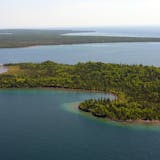As heavy machinery scraped the site of a highway project near Lake Minnetonka, something unusual turned up in the dirt: quarter-sized fragments of bone. That was enough to stop the machines, because the on-site archaeologist knew that Hennepin County was digging the site of Indian burial mounds first mapped in 1883.
State Archaeologist Scott Anfinson had signed off on the project, after several surveys convinced him that any artifacts or remains were probably long destroyed.
But on that day last October, Anfinson got the bad news. For the first time in his 10 years in the job, he had given the green light to a project through a known archaeological site, only to find out that it was still an ancient tomb.
The discovery halted work on a planned roundabout that would eliminate a dangerous 90-degree curve on Hennepin County Road 101. Last week, Hennepin County engineers met with tribal and archaeological representatives to start mapping the way forward.
"It's real upsetting to tribal people," said Jim Jones, cultural resources director of the Minnesota Indian Affairs Council. "It shouldn't have happened. Now we have to fix it."
Jones said the road design will have to change in order to preserve what's left of the mounds. His voice holds significant sway — state law gives the council the authority to protect American Indian burial sites.
The Legislature granted that authority in 1976 to stop the widespread bulldozing of Indian mounds, which hadn't been afforded the same protection as white cemeteries. Bones still turn up in construction projects all the time, but those are typically grave sites not on any map.
Minnesota is home to an estimated 12,000 known mounds, the final resting places built by Indians from about 500 B.C. through 1500 A.D., Anfinson said.



